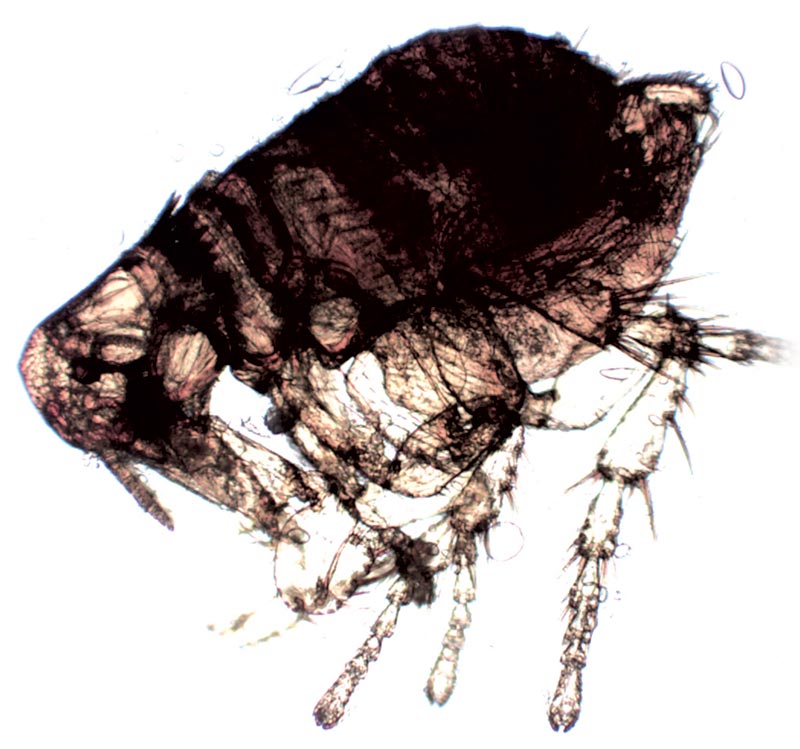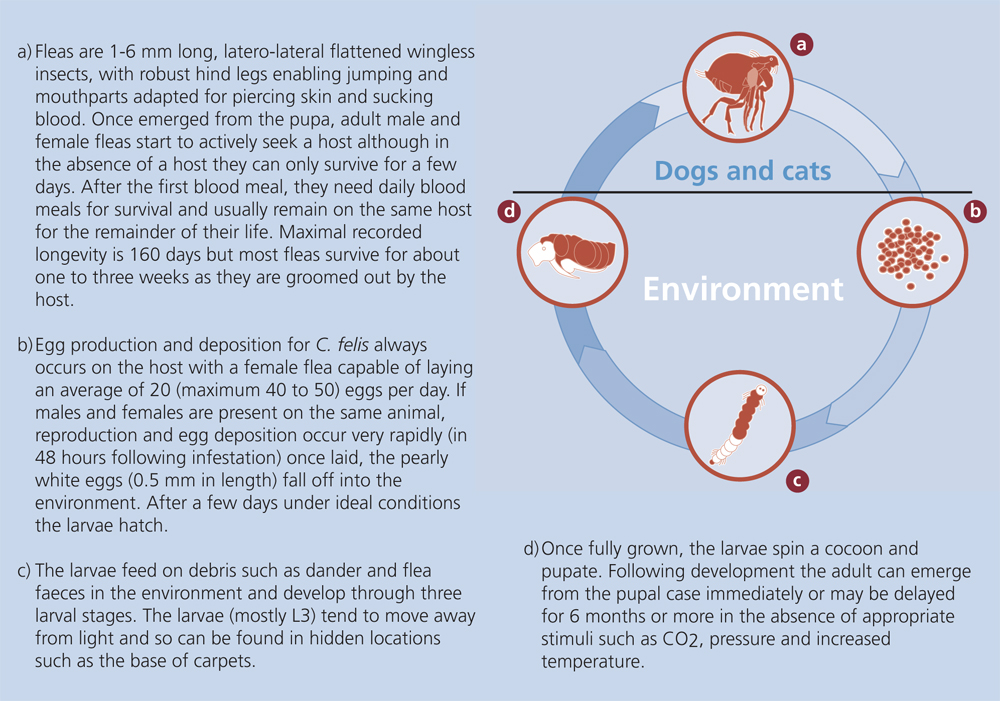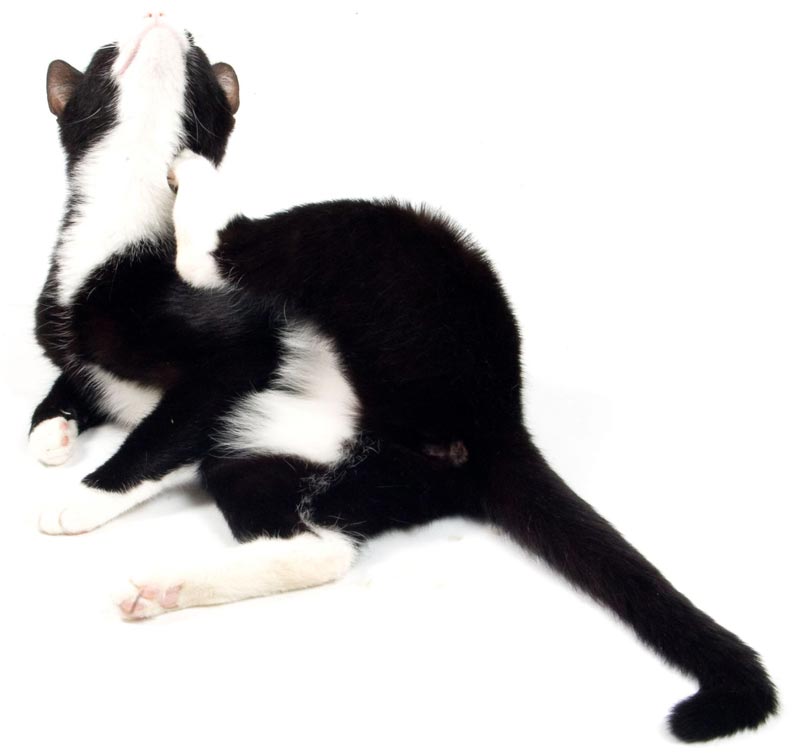ProfessionalsMembersResourcesDownloadsGuidelinesParasite ID PostersParasite Life CyclesPodcastsTherapiesTick Hosts, Habitats and PreventionFAQsScientificControlEctoparasitesEndoparasitesVector Borne DiseasesZoonosesTravelling Pets


Fleas (Siphonaptera) are:
Important Considerations
Life Cycle


Clinical signs
Clinical signs associated with flea infestations on dogs and cats are highly variable depending on the following factors:
Degree of hypersensitivity
Animals that are allergic or develop an immunological reaction to flea saliva, show pruritus, alopecia, broken hairs, papules and erythematous macules with crusts. Moist dermatitis may be seen typically in the dorsal lumbar and tail region. The lesions can extend to the thighs and abdomen. Secondary pyotraumatic dermatitis, pyoderma, and seborrhoea are commonly seen.
In chronic cases, the skin shows thickening of the dermis with acanthosis, hyperkeratosis and lichenification. In addition, especially in young, old or debilitated animals, heavy infestations with a large number of fleas can cause anaemia.
Infection with the tapeworm D. caninum can be a strong indication of a current or recent flea infestation.
Treatment and Control of an Existing Infestation
Elimination of an existing infestation of adult fleas using an approved ectoparasiticide. Individual product leaflets should be consulted for details. Depending on the severity of the infestation and the drug used, treatment may need to be repeated at intervals until the problem is controlled. All other (dogs and especially cats, which maybe overlooked) living in the same household should also be treated
An established adult flea infestation normally accounts for only a very small proportion of the total flea population including immature stages present in the pet's surroundings. Thus control of environmental stages must also be considered, especially in the case of heavy infestations. The regular use of products that eliminate adult fleas on the animal also progressively contribute to the reduction of immature stages in the environment.
Flea eggs, larval and pupal stages may be targeted by using products specific for flea stages present in the environment. Some of these are specially designed for environmental application (sprays etc.), while others are licensed for animal administered application. Environmentally and animal-administered products may contain compounds with adulticidal and/or Insect Growth Regulator (IGR) activity. Environmental treatment should be focussed on areas where the animal spends the most time, such as their basket. It can be difficult to eliminate pupal stages, partly because they tend to be located in hidden locations such as the base of carpets. In cases of severe flea infestation, a combination or concomitant use of environmental and animal administered products is usually necessary and will control the infestation more rapidly. It is important to manage owner expectations: adult fleas may continue to emerge from the environment for a considerable period of time after the initiation of treatment.
Other measures such as vacuuming of carpets and washing of pet's bedding material can help in reducing flea stages in the environment. Combing the animal's hair coat for fleas may be used to monitor the level of infestation. More rarely, flea traps have been used to assess the environmental contamination but this is mainly done for research purposes.
Additional topical or systemic treatments may be necessary to reduce the clinical signs of flea infestation or FAD, until the infestation is brought under control
Prevention and Ongoing Control
In areas where reinfestation with fleas is highly likely, such as warm conditions and multiple animal households, regular prophylaxis using an approved product is recommended. While flea infestations peak in summer and autumn, studies have shown that flea infestation can occur throughout the year, thus year-round flea control might be necessary.
The following questions may help to define an appropriate flea prevention and control strategy:
Risk Scenarios
Minimal infestation risk (e.g. animals with restricted or no outdoor access):
Regular infestation risk (e.g. animals with regular outdoor access):
High, continual reinfestation risk (e.g. pet shelters, breeder's premises, mixed-pet households, hunting dogs):
Animals with recognised flea allergy dermatitis (FAD):
Flea infestation of the owners:
Although there is no clear guidance about the risk of selecting for resistance through repeated or continuous treatments, in order to minimise the potential risk, it may be advisable to change to a different class of compounds every year or two.
| Title | Size | |
Fleas Pet Owner Info Sheet | 0.12MB |